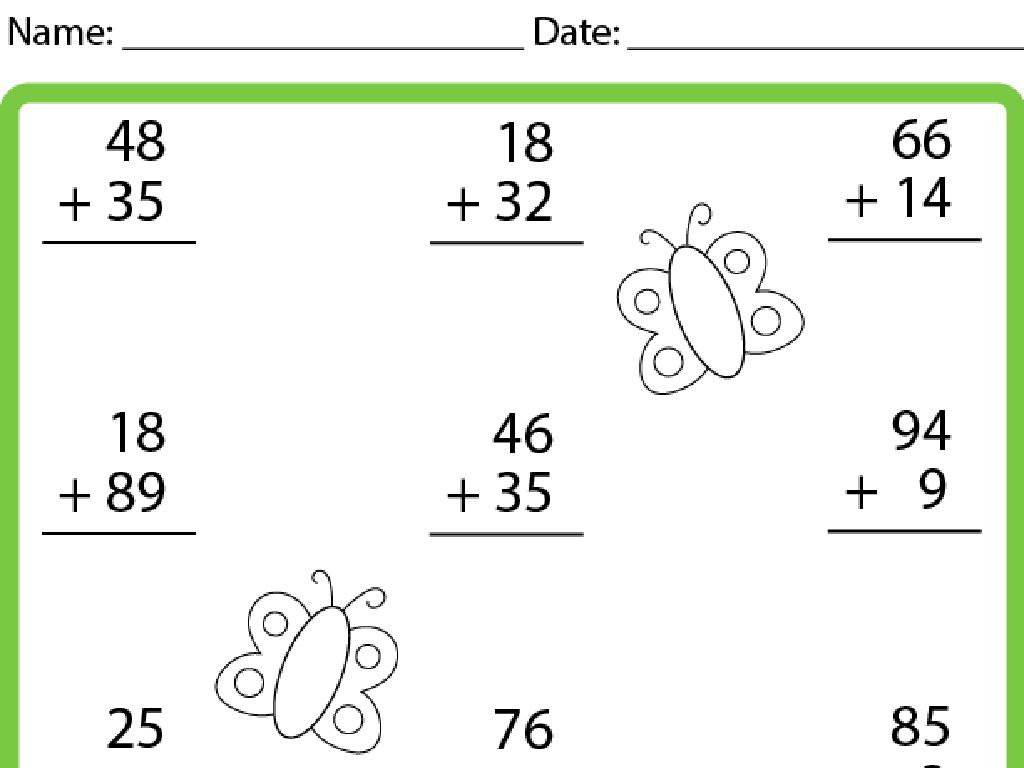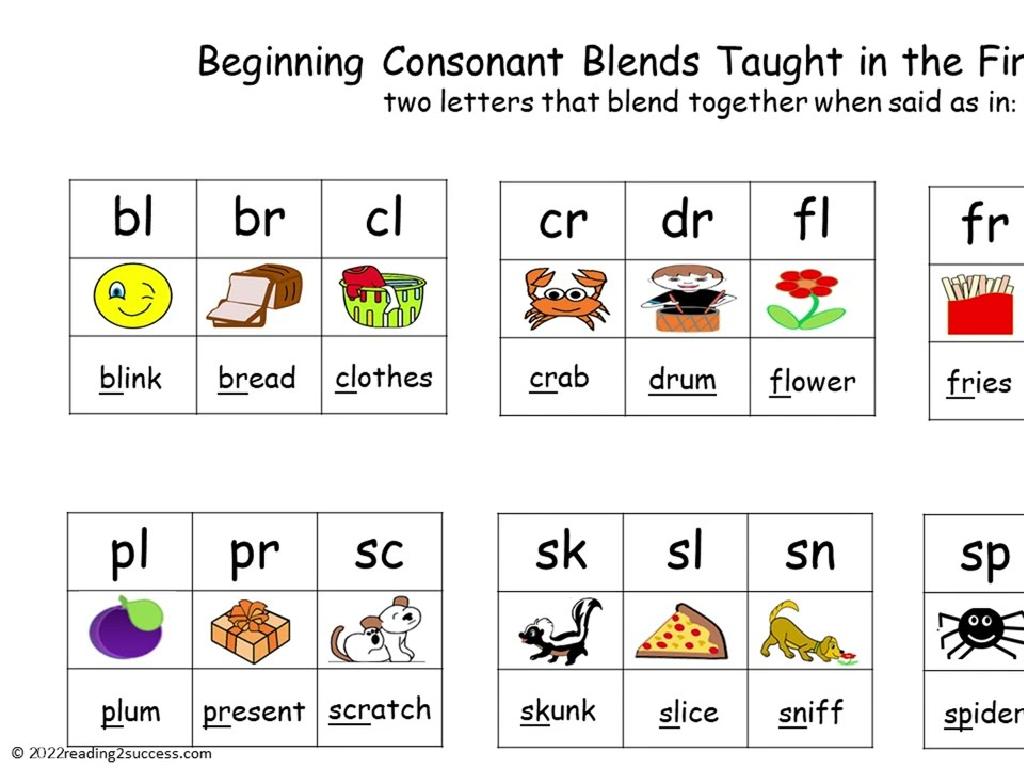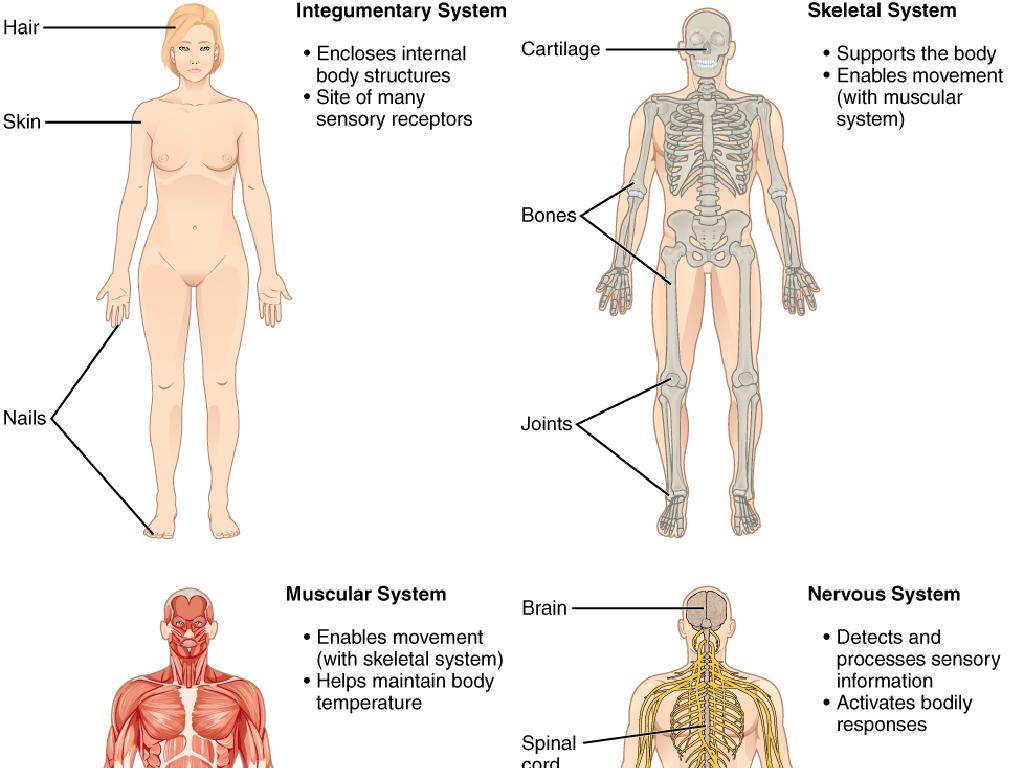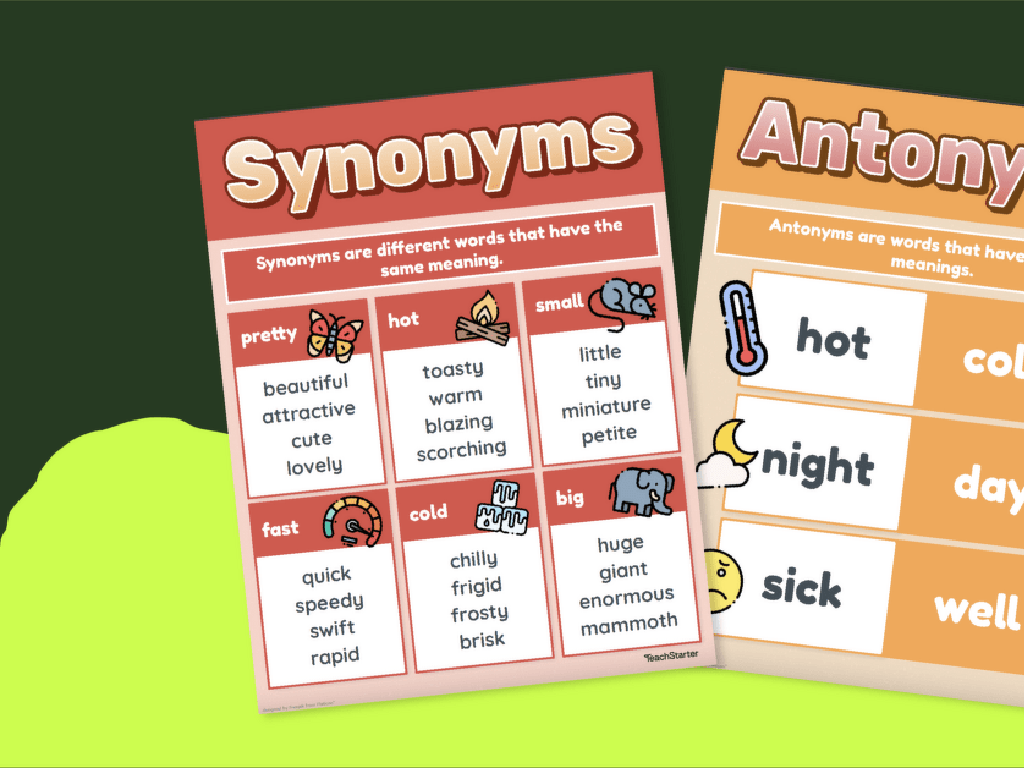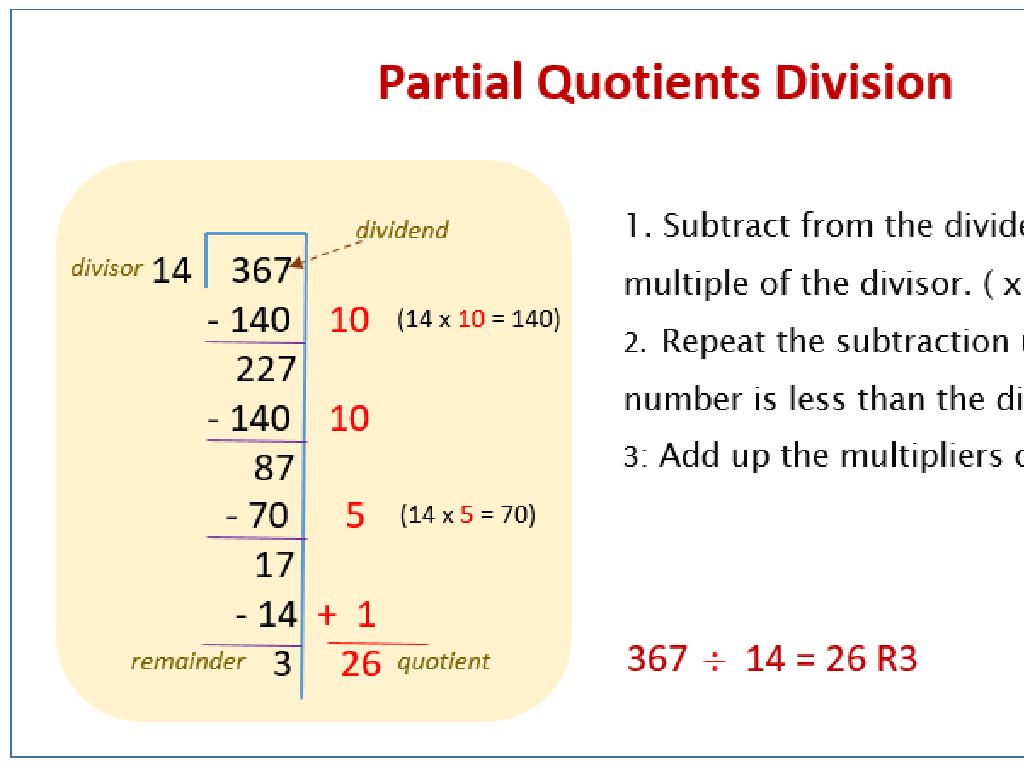Identify Text Structures
Subject: Language arts
Grade: Third grade
Topic: Match Causes With Effects
Please LOG IN to download the presentation. Access is available to registered users only.
View More Content
Matching Causes with Effects in Texts
– What causes and effects are
– A cause is why something happens; an effect is what happens.
– Actions and their reactions
– Like knocking over a glass (cause) and it spilling (effect).
– Text structure importance
– Knowing this helps us understand stories better.
– Practice with examples
– We’ll look at sentences to find causes and effects together.
|
This slide introduces the concept of cause and effect within text structures, which is a fundamental component of reading comprehension. It’s crucial for students to understand that a cause is the reason something happens, and the effect is the result. Use everyday examples to illustrate this relationship, such as knocking over a glass of water (cause) leading to a spill (effect). Explain that identifying these relationships in texts can help them better understand the sequence of events and the writer’s intent. Provide practice sentences and encourage students to discuss the cause and effect in each. This will prepare them for more complex texts as they progress in their education.
Understanding Cause and Effect
– What is a ’cause’?
– A ’cause’ is a reason something happens
– What is an ‘effect’?
– An ‘effect’ is what happens because of the cause
– Example: Rain and wet ground
– Cause: It rained. Effect: Ground is wet.
– Practice finding causes and effects
|
This slide introduces the concept of cause and effect, which is a key text structure in reading comprehension. A cause is the reason why an event happens, and an effect is the result of that event. Use everyday examples to illustrate the concept, such as the relationship between rain and the ground being wet. Encourage students to think of other cause-and-effect scenarios in their daily lives. In the next class, have students practice identifying causes and effects in sentences or stories to reinforce their understanding.
Signal Words: Finding Causes and Effects
– What are signal words?
– Words that show why something happened (cause) or what happened (effect)
– Examples: ‘because’, ‘so’, ‘therefore’
– ‘Because’ tells us why, ‘so’ explains what happened after
– ‘As a result’ shows effect
– When we see ‘as a result’, we know an effect is coming next
– Practice finding signal words
– We’ll look for these words in sentences to spot causes and effects
|
This slide introduces students to the concept of signal words, which are keywords that help identify cause and effect relationships in text. Start by explaining that signal words are like clues that can help us figure out why something happened (the cause) or what happened because of it (the effect). Provide examples of signal words and use them in simple sentences to illustrate their function. Encourage students to practice by finding signal words in sentences, which will help them understand the relationship between causes and effects. This activity will enhance their reading comprehension skills and prepare them for more complex text analysis.
Cause and Effect Matching Game
– Understand cause and effect
– A cause is why something happens; an effect is what happens
– Find clues in sentences
– Words like ‘because’, ‘so’, and ‘therefore’ can be clues
– Match causes with effects
– Use the clues to connect reasons and outcomes
– Practice with a buddy
|
This slide introduces a matching game activity to help students understand the concept of cause and effect in text. Start by explaining that a cause is the reason something happens, and the effect is what happens as a result. Teach them to look for clue words that signal cause and effect relationships. Then, have students pair up to practice matching causes with their effects using example sentences or scenarios. This interactive activity will reinforce their understanding and help them apply the concept to reading comprehension. Provide guidance and support as they work through the examples.
Finding Cause and Effect in Stories
– Read a story as a class
– Spot the cause and effect
– What made something happen (cause) and what happened (effect)?
– Discuss their impact on the story
– How do these elements make the story more interesting?
– Understand story structure
– Recognizing patterns helps us predict and enjoy stories more
|
This slide is aimed at helping third-grade students understand the concept of cause and effect within the context of a story. By reading a story together, students can actively engage with the material and work collaboratively to identify the cause and effect relationships that drive the narrative forward. During the discussion, guide students to see how these relationships add depth to the story and influence the direction of the plot. Encourage them to think about how understanding cause and effect can help them become better readers and storytellers. Provide examples from the story to illustrate these points clearly. This activity will also enhance their critical thinking and comprehension skills.
Creating Cause and Effect
– Think of an event and outcome
– Write a cause and effect sentence
– Example: ‘Because it rained, the park was muddy.’
– Share your sentence with the class
– Understand cause and effect links
– Helps us see how events are connected
|
This slide is an interactive class activity designed to help students understand the concept of cause and effect. Students are encouraged to think of an event that happens (cause) and what happens because of that event (effect). They will then construct a sentence that clearly shows the cause and effect relationship. This activity will help students practice their critical thinking and sentence construction skills. In the next class, students will have the opportunity to share their sentences, allowing them to learn from each other’s examples. Teachers should provide guidance and feedback, ensuring that students grasp the concept of how events are linked together.
Class Activity: Cause and Effect Chain
– Create a paper chain
– Each link is a cause or effect
– Write a cause on one link, then an effect on the next
– Work together to build the chain
– Aim for the longest chain possible!
|
This activity is designed to help students visually understand the relationship between causes and effects. Provide students with strips of paper and instruct them to write down a cause on one strip and an effect on another, linking them together in a paper chain. Encourage them to think of simple everyday events that have clear causes and effects. Divide the class into small groups and challenge them to create the longest chain. This will foster teamwork and discussion about how events are connected. Possible examples to start with: ‘It rained’ (cause) leads to ‘The flowers grew’ (effect), or ‘The dog barked’ (cause) leads to ‘The cat ran away’ (effect). The goal is to create a tangible representation of the concept and to have fun while learning.
Review and Reflect: Cause and Effect
– Recap on cause and effect
– We learned that a cause is why something happens and an effect is what happens.
– Importance of identifying them
– Knowing them helps us understand stories better.
– Share a memorable lesson point
– Think of one thing from today that will help you read better.
|
This slide is meant to consolidate the day’s learning about cause and effect. Start by asking students to recall the definition of cause and effect. Emphasize the importance of this concept in understanding the sequence of events in a story and how it can improve comprehension skills. Encourage each student to reflect on the lesson and share one thing that stood out to them or that they found particularly interesting. This could be an example from a story they read or an activity they did in class. This reflection helps to reinforce their learning and allows you to assess their understanding of the lesson’s objectives.

